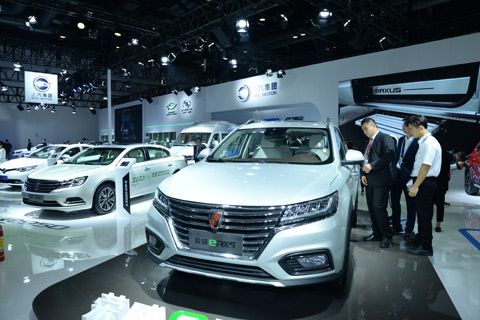The Growing Resistance: Car Dealers Fight Electric Vehicle Quotas

Table of Contents
The automotive industry is undergoing a seismic shift. Governments worldwide are increasingly pushing for the adoption of electric vehicles (EVs), often through the implementation of mandatory electric vehicle quotas. This pressure is creating significant tension within the car dealership network, leading to a growing resistance against these quotas. This article explores the reasons behind this resistance, examining the financial, infrastructural, and market-related challenges that dealerships face in transitioning to an EV-centric future.
<h2>Financial Hurdles Faced by Dealerships Transitioning to EVs</h2>
One of the primary reasons for resistance to electric vehicle quotas is the substantial financial burden placed on dealerships. Transitioning to a significant EV sales focus requires considerable upfront investment. Dealerships must invest in new infrastructure to support EVs, which can be a significant financial strain. This includes installing charging stations, acquiring specialized tools and equipment for EV servicing, and retraining staff.
- High upfront costs for charging infrastructure installation: Setting up fast-charging stations requires substantial capital expenditure, often involving significant electrical upgrades to existing facilities. The cost varies drastically depending on the number of chargers, their power output, and the complexity of the installation.
- Lower service revenue from EVs compared to ICE vehicles: Electric vehicles have fewer moving parts than internal combustion engine (ICE) vehicles, resulting in less frequent and less complex maintenance needs. This translates to lower service revenue for dealerships.
- Training expenses for EV-specific maintenance and repair: Mechanics require specialized training to diagnose and repair EV components, adding to the overall transition costs. This includes training on high-voltage systems, battery management, and specialized diagnostic tools.
- Potential for inventory obsolescence due to rapid technological advancements: The rapid pace of innovation in the EV market means dealerships risk investing in inventory that becomes outdated quickly, leading to potential financial losses.
<h2>Consumer Demand and Market Readiness for Electric Vehicles</h2>
While the demand for electric vehicles is undeniably growing, it's not yet widespread enough to offset the financial risks associated with the transition. Consumer adoption is hampered by several factors.
- Limited public charging infrastructure in certain areas: Range anxiety, the fear of running out of battery power, is a major concern for potential EV buyers, particularly in areas with limited public charging infrastructure. This lack of access to reliable charging points remains a significant barrier to adoption.
- Higher initial purchase price of EVs compared to gasoline cars: Despite decreasing battery costs, EVs generally command a higher initial purchase price than comparable gasoline-powered vehicles. This price difference makes them inaccessible for many consumers.
- Range anxiety among potential EV buyers: The limited range of many EVs compared to gasoline cars is a significant concern for many potential buyers, particularly those who regularly undertake long journeys.
- Lack of consumer awareness about EV benefits and incentives: Many consumers remain unaware of the environmental and financial benefits of EVs, as well as the government incentives available to encourage their purchase. Effective consumer education campaigns are crucial.
<h2>Dealership Infrastructure and the Challenges of EV Integration</h2>
Adapting existing dealership infrastructure to accommodate electric vehicles presents another significant hurdle. Dealerships often need to make substantial modifications to their facilities, which can be expensive and logistically challenging.
- Significant investment required to upgrade dealership facilities for EV servicing: This includes installing specialized lifts, tools, and safety equipment designed to handle high-voltage systems in EVs.
- Space limitations for installing sufficient charging stations: Adding enough charging stations to meet the growing demand for EV charging requires significant space, which may be limited in existing dealership facilities.
- Incompatibility between different EV charging standards: The lack of a standardized charging infrastructure further complicates matters, requiring dealerships to invest in multiple types of charging equipment to accommodate a variety of EVs.
- Need for specialized tools and equipment for EV repair: Repairing EVs requires specialized tools and diagnostic equipment, which represent a significant investment for dealerships.
<h3>The Impact of Electric Vehicle Quotas on Dealership Business Models</h3>
Electric vehicle quotas directly impact established dealership business models. The mandatory nature of these quotas forces dealerships to adjust their sales strategies and potentially reduce the sale of traditional internal combustion engine (ICE) vehicles.
- Reduced sales of traditional vehicles due to quota requirements: Meeting EV quotas can lead to a decrease in the sales of profitable gasoline and diesel vehicles.
- Financial strain on dealerships with insufficient resources to adapt: Smaller dealerships with limited financial resources may struggle to meet the requirements of EV quotas, potentially leading to financial hardship.
- Potential job losses in sales, service, and parts departments: The shift to EVs could result in job losses in areas where expertise in ICE vehicles is no longer as crucial.
<h2>Conclusion: Navigating the Resistance to Electric Vehicle Quotas</h2>
The resistance to electric vehicle quotas stems from a confluence of financial, infrastructural, and market-related challenges faced by car dealerships. Addressing these concerns requires a balanced approach that supports the transition to sustainable transportation while acknowledging the needs of the car dealership industry. Open communication and collaboration between policymakers, manufacturers, and dealerships are crucial to finding solutions that address concerns about electric vehicle quotas. Finding solutions that address concerns about electric vehicle quotas is crucial for the future of the automotive industry. The industry needs a collaborative effort to ensure a smoother and more sustainable transition to a future dominated by electric vehicles.

Featured Posts
-
 The Love Monster And You Practical Tips For Self Care And Growth
May 21, 2025
The Love Monster And You Practical Tips For Self Care And Growth
May 21, 2025 -
 Razvod Vanje Mijatovic Sta Se Zapravo Dogodilo
May 21, 2025
Razvod Vanje Mijatovic Sta Se Zapravo Dogodilo
May 21, 2025 -
 The Goldbergs Why The Show Resonates With Audiences
May 21, 2025
The Goldbergs Why The Show Resonates With Audiences
May 21, 2025 -
 Huuhkajat Avauskokoonpanoon Kolme Muutosta Kaellman Penkille
May 21, 2025
Huuhkajat Avauskokoonpanoon Kolme Muutosta Kaellman Penkille
May 21, 2025 -
 The Goldbergs Complete Episode Guide And Season Recaps
May 21, 2025
The Goldbergs Complete Episode Guide And Season Recaps
May 21, 2025
Latest Posts
-
 Assessing Giorgos Giakoumakis Transfer Prospects An Mls Perspective
May 21, 2025
Assessing Giorgos Giakoumakis Transfer Prospects An Mls Perspective
May 21, 2025 -
 Efimeries Iatron Stin Patra Ayto To Savvatokyriako
May 21, 2025
Efimeries Iatron Stin Patra Ayto To Savvatokyriako
May 21, 2025 -
 Patra Efimereyontes Iatroi Savvatokyriako
May 21, 2025
Patra Efimereyontes Iatroi Savvatokyriako
May 21, 2025 -
 I Ypothesi Giakoymaki Mia Analysi Toy Bullying Kai Tis Tragikis Apoleias
May 21, 2025
I Ypothesi Giakoymaki Mia Analysi Toy Bullying Kai Tis Tragikis Apoleias
May 21, 2025 -
 Iatroi Se Efimeria Patra Savvatokyriako
May 21, 2025
Iatroi Se Efimeria Patra Savvatokyriako
May 21, 2025
